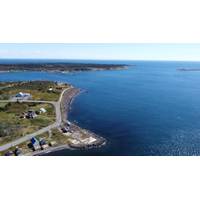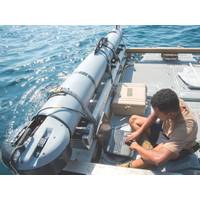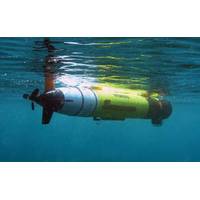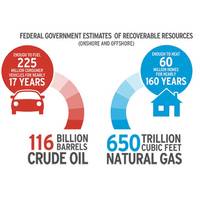
BMT's Off-grid Project Enabling Rural Electrification in Canada
can offer a highly predictable and reliable power profile which could be utilised on Canada's east and west coasts. This is where our partnership with the BMT to test their Smart Microgrid technology comes in. We are working together to ensure our world-leading tidal energy technology can provide greater energy independence and security of supply for these communities."Autonomous microgrid manager©BMTMartin Moody, BMT’s Principal Electrical Engineering Specialist said: "BMT has developed its microgrid solution considering renewable energy sources to assist with decarbonisation of
Riptide Expands Its UUV Product Line
just over 60 pounds (27 kg) with a depth rating of 300 meters. The 2-Man Portable UUV has a 9.375 inch (24 cm) diameter and a base weight of roughly 120 pounds (55 kg) with a depth rating of 600 meters. “Our new family of low logistics vehicles offer our users extensive flexibility for greater energy and payload volume while leveraging the proven benefits of the Micro-UUV design.” said Jeff Smith, President of Riptide.

Unmanned Underwater Vehicles: Is Bigger Better?
surface ships and submarines. The craft’s missions will include ISR, acoustic surveillance, ASW, mine countermeasures, and offensive operations.” The LDUUV differs from other unmanned underwater vehicles built or evaluated by the Navy in that its large displacement allows for greater energy capacity to support increased persistence. “The greater energy capacity extends the reach of Navy UUVs,” said Naval Sea Systems Command (NAVSEA) spokesman Dale Eng. According to Eng, the LDUUV is planned as an unmanned undersea vehicle to conduct “dull, dirty

Five Minutes with Hydroid President Duane Fotheringham
more intelligence and autonomy in the vehicles. They’re able to go out and do more things, more applications. If you look outside of that, one of the limitations of putting something in the water is how much energy you can put into it. The technology for energy storage and batteries, and having greater energy density and safer technologies is something that will drive efficiency and performance in the future. What do you consider the key to attracting and retaining the people that you want? Giving them interesting work in an environment where their ideas can be heard and put

Chevron Urges USA to Seize Energy Opportunity
could raise more than $800 billion in cumulative government revenue by 2030. If the United States encourages responsible development of our abundant energy resources, it could help create more than a million good-paying jobs for Americans, add billions of dollars in government revenues and lead to greater energy security between now and 2030. In the process, we could reduce our dependence on oil imports, giving us greater control over our energy future. The bottom line is that the energy economy is ready to drive the country forward. But it requires a policy agenda that enables, not compromises, that
Market and Technology Trends in Underwater Sensors & Instumentation
, and ROVs/AUVs). Rugged sensors and instrumentation: The expansion of human activity in the Arctic Ocean and the deep sea has led to a demand for sensors and instrumentation capable of surviving extreme conditions. For work in these environments, end-users will increasingly demand equipment with greater energy efficiency, longer mission life, and capable of automated or remote control. The key technology challenges are increasing the reliability and resilience of sensitive instruments on ships, underwater vehicles, and other marine platforms to allow for continued remote operation with minimal maintenance



 February 2024
February 2024





